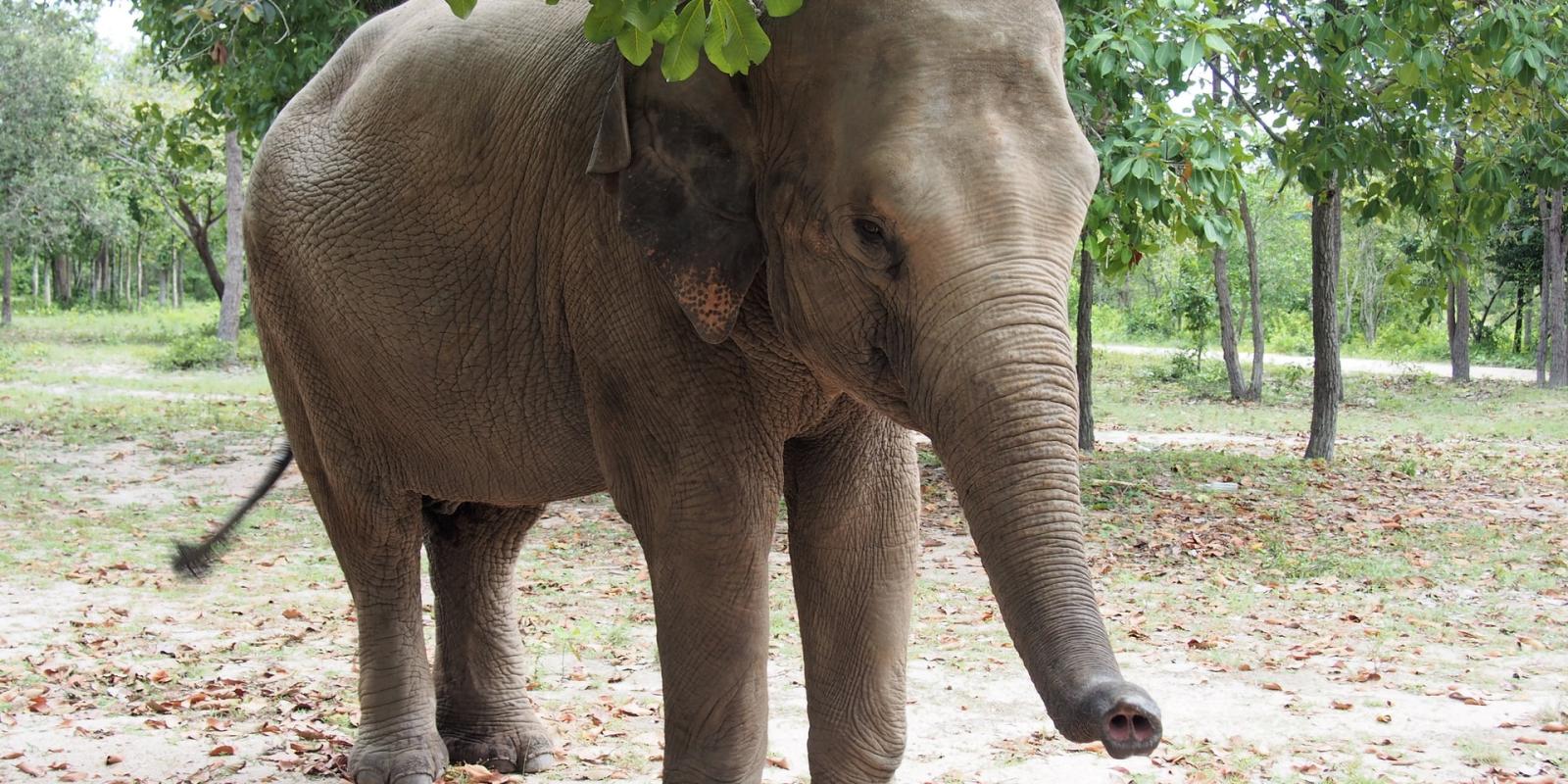Cambodia is a land of incredible biodiversity, located in the crossroads of Southeast Asia. The country shares borders with Vietnam to the east, Thailand to the northwest, Laos to the north, and the Gulf of Thailand to the south.
This motherland comprises abundant natural resources surrounded by rivers, forest, steep hills and mountains, notably the Cardamom Mountains. The great Mekong River, on the other hand, runs through the nation’s heart; meanwhile, the Tonle Sap river, which flows to the Mekong, is one of the world’s greatest freshwater fish suppliers and Southeast Asia’s biggest freshwater lake.
Cambodia wildlife safari might not be a hot destination for observers despite the country’s landscape. Yet, some isolated jungle may provide the ultimate possibilities for wildlife surveillance in Southeast Asia. The truth is that Cambodia wildlife primarily lives in an intact ecosystem, such as the Elephant Mountains, the Lower Mekong, and especially the Cardamom Mountains. The implication is that these forests are home to several endangered species, including the tiger, sun bear, Asian elephant, clouded leopard, gibbon, and gaur.

Due to deforestation and habitat degradation, this country’s wildlife is heavily endangered. As a result, many Cambodia wildlife organizations have been active with various initiatives to safeguard Cambodia’s remaining animals so that related parties would receive a glimpse of these environmental concerns and discover what they can help.
In this article, you will get to know some of Cambodia’s most iconic wildlife habitats in specific areas of the country as follows.
1. Elephants From Asia
In Cambodia’s biggest Asian elephant habitat, Mondulkiri is shelter to one of Southeast Asia’s few surviving elephant corridors. While encountering wild elephants is uncommon, chances are visitors can contact Cambodia wildlife tour and can get intimate with these magnificent creatures in the deep forest via some initiatives, such as Elephant Valley Project. Still, travelers should never anticipate going on an elephant ride since this act is strongly against the organization’s mission.

2. Irrawaddy Dolphin
Severely threatened, Irrawaddy dolphins live in a narrow section of the river of Mekong. During the 1960s, Kratie, which is located along the Laos and Cambodia border, was the shelter for thousands of dolphins. Currently, World Wide Fund for Nature (WWF) Cambodia estimates just around 85 dolphins left in the country. Travelers can hire a local trip boat from Kampi for around 20 minutes via flooded forest during the rainy season to view the dolphins. And it takes roughly 40 minutes during the dry season because the animals go farther down the river.
3. Crested Gibbon with Yellow Cheeks
This special gibbon is mostly found in northeastern Cambodia, southern Laos, southern Vietnam, while Cambodia has the highest number. However, these gibbons are vulnerable to habitat loss and illegal trade. According to a recent assessment, Seima Biodiversity Conservation Area has the highest number of wildlife species in Cambodia, while the Eastern Plains Landscape of Mondulkiri’s Phnom Prich Wildlife Sanctuary stays second.
4. Giant Ibis
The Cambodian national bird, the enormous ibis, is severely vanishing. Preah Vihear’s northern region, near the Thai border and Mondulkiri, has a limited population. However, a few centers are dedicated to preserving the country’s decreasing birdlife by Cambodia wildlife experts. They offer a series of excursions that take guests to observe the giant ibis and other wildlife.
5. Banteng
Banteng is a supremely attractive and elegant wildlife in Cambodia. However, its population dropped by roughly 95%, one during the 1960s and others during the 1990s reported by WWF Cambodia. Nowadays, banteng lives in the eastern forest of Cambodia. Their population is pretty stable because of the authorities’ efforts to protect them. But regardless of all that, illegal hunting, habitat degradation, and illness continue to put this animal species in great danger.
6. Clouded Leopard
The timid night cats enjoy their lives on the branches of trees. However, hidden camera set-ups in Mondulkiri have been capturing them sometime. Visitors can find them at Phnom Tamao. This wildlife alliance’s rescue center saves a wide variety of wildlife from the illicit trade, trafficking and relocation before being freed back into their wild nature.
7. Sun Bear
This type of wildlife is the tiniest and most endangered of the world’s eight bear species. Travelers can see them at Phnom Tamao. Naturally, they love lounging on treetops, eating delicious fruits, tiny mice, birds, insects, and, more than anything, honey. These primates were formerly numerous in Southeast Asia’s low-lying forests, while some living in protected places like Ratanakiri and Mondulkiri. Unfortunately, these species are often trapped and killed. Many people believe this animal can be used for effective medicinal purposes.
8. Germain’s Silver Langur
They live in green and riverine forests. The grown-ups are silvery gray, while their younger ones have a bright ginger color. Langurs can be seen a lot in the country – the majority of them inhabiting Mondulkiri’s Eastern Plains. No matter how, WWF Cambodia believes that the number has been cut in half by now due to hunting them for old-fashioned medication.
9. Pygmy Slow Loris
Pygmy slow lorises look so adorable. Because of its nighttime living, people frequently cannot recognize their way of existence. Yet, these animals can be seen around the Mekong River. Most of these inhabitants live in Phnom Prich Cambodia Wildlife Sanctuary. Nevertheless, their decrease in population owes to the attack on traditional medicine. Aside from that, this primate is considered a common element in conventional Khmer remedies.
10. Sunda Pangolin
WWF Cambodia remarks that pangolins are one of the most pricy animals in the illegal wildlife trade, regularly confiscated from poachers. Rescued species, indeed, can be found at Phnom Tamao Rescue Center. They are ready for a new shelter in nature again. However, due to high levels of hunting for medication, the population of Sunda Pangolin is believed to decrease more than half in the last 15 years throughout the country.
11. Pelochelys Cantorii
The Cantor’s giant softshell turtle is another endangered species that makes its home in Cambodia. It is a species that is on the verge of extinction. These turtles can expand up to almost two meters, and can also be spotted in Kratie and a small part of the Mekong River. Following the protection and breeding initiatives at the conservation center in Kratie, giant turtles are relatively stable nowadays. Moreover, travelers can visit the newborn and adult turtles and get to know about the authority’s efforts to rescue these wildlife species.
References:
- M. (2017, November 2). 11 Awesome Native Animals You Must See in Cambodia. The Culture Trip. Retrieved March 11, 2022, from https://theculturetrip.com/asia/cambodia/articles/11-awesome-native-animals-you-must-see-in-cambodia/
- Fauna & Flora International. (2018, February 21). Cambodia. Retrieved March 13, 2022, from https://www.fauna-flora.org/countries/cambodia/





